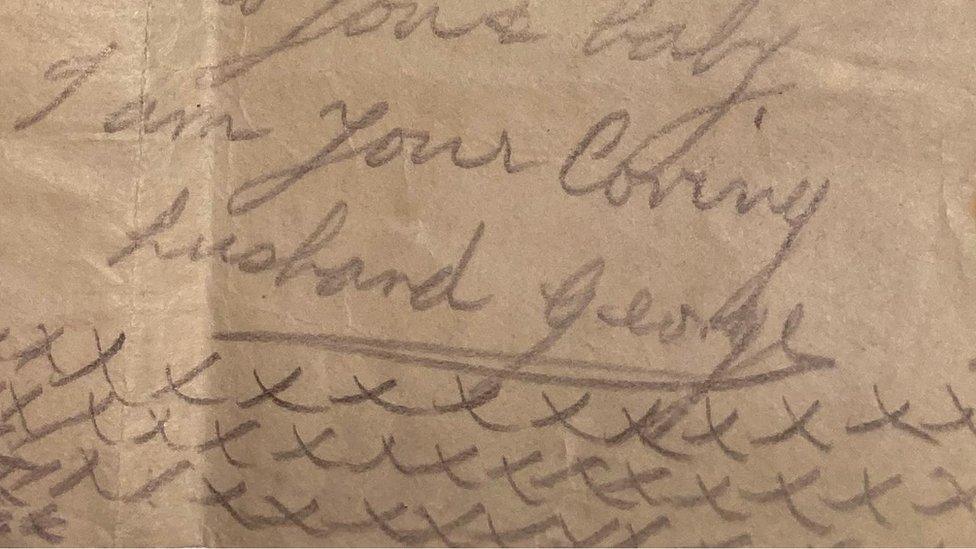Longleat photos show WW1 soldiers on frozen lake
- Published
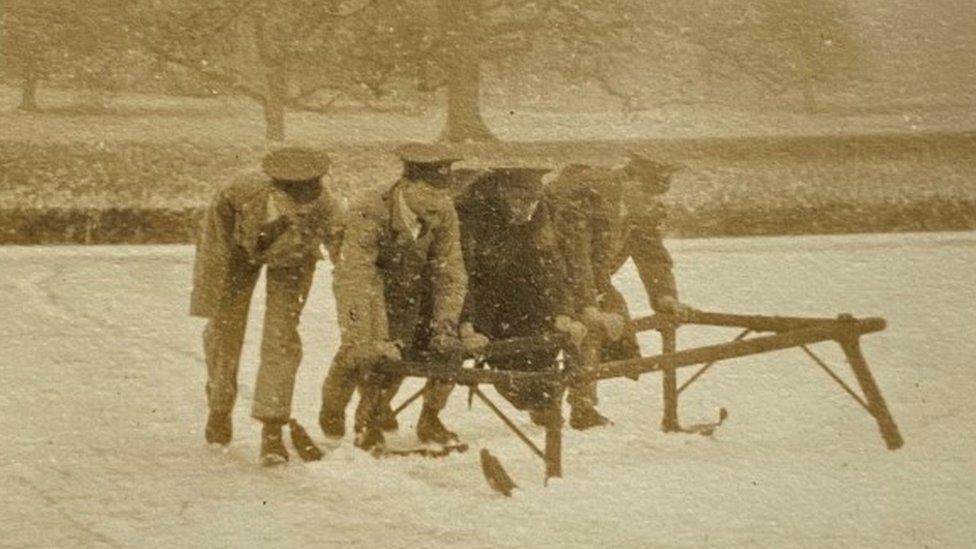
The resourceful soldiers made their own toboggan
A set of photographs has been found showing soldiers on a frozen lake in Wiltshire on one of the rare occasions it was cold enough to do so.
Longleat House, near Warminster, was used as a makeshift hospital from November 1914 to January 1919.
It treated more than 2,040 soldiers in World War One as well as victims of the 1918-19 Spanish flu pandemic.
Longleat's curator said the ice on Half Mile Pond was more than a foot thick when it froze in February 1917.

Half Mile Pond as seen from Longleat House taken in the winter of 1917
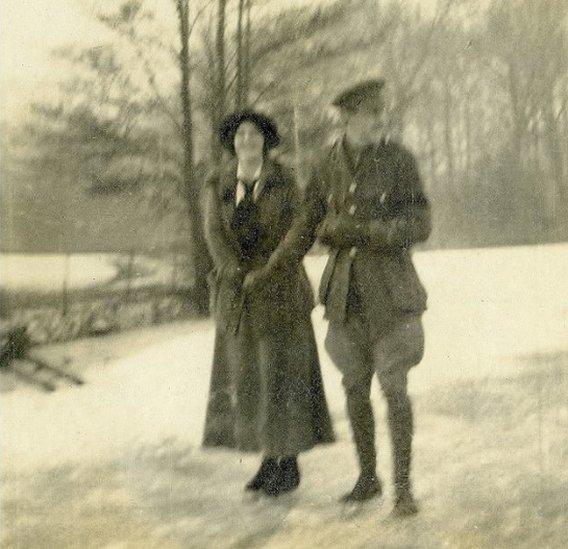
Lady Kathleen Thynne is pictured skating with an officer on Half Mile Pond
The photos were found in a drawer in the top floor library of Longleat House and also include members of the Thynne family who owned the house.
'Struck a chord'
Curator Dr James Ford said he was already aware that the lake froze over in 1917 and later during World War Two.
"What I wasn't expecting to find was such amazing emotive images... snow seems to instantly turn you back into a child and these photos brought it back.
"Even in the depths of really difficult periods like the First World War and a pandemic these moments can bring real joy and levity so they really struck a chord with me."

Deep snow can be seen in this image of soldiers walking around Longleat - this photo was taken in January or February 1917
The South West recorded large snow falls of up to 14in (35.5cm) in 1917.
A temperature of -19.4C (-2.9F) was recorded in Wellington on 7 February that year and the low temperatures persisted until April when it was still -5C (23F) in some areas.
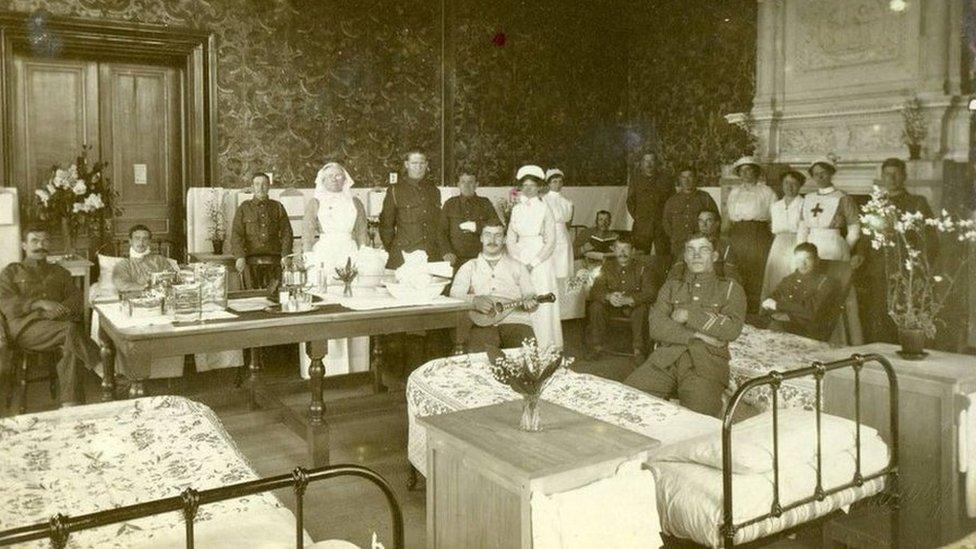
The house was turned into a makeshift hospital
The first patients to be treated at Longleat were 31 Belgian soldiers who fought to defend West Flanders following the retreat of the British Expeditionary Force.
The house was reconfigured with 100 beds set up in the saloon and state dining room, and one of the bedrooms was used as an operating theatre.
Nurses' living quarters were situated on the top floor of the house.

Longleat House is now a visitor attraction
Activities such as plays, concerts and sporting events were also arranged for the convalescing soldiers.
"The photographs provide a fascinating insight into the daily lives of the soldiers as they recuperated and recovered from their injuries," Dr Ford said.
"It must have been quite a shock to have come from the horrors of the battlefront to the grandeur and comfort of Longleat House," he added.

Follow BBC West on Facebook, external, Twitter, external and Instagram, external. Send your story ideas to: bristol@bbc.co.uk , external
Related topics
- Published16 February 2021
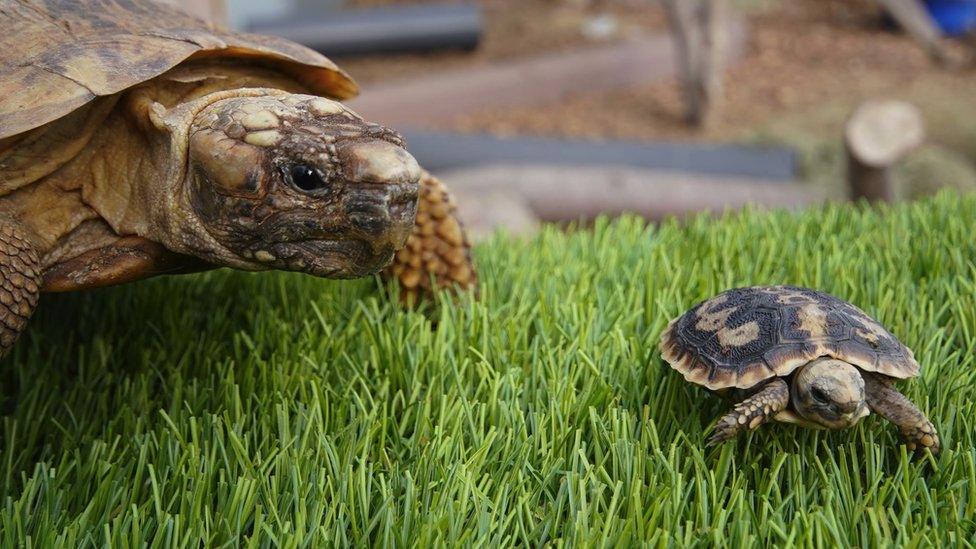
- Published29 January 2021

- Published5 January 2021
